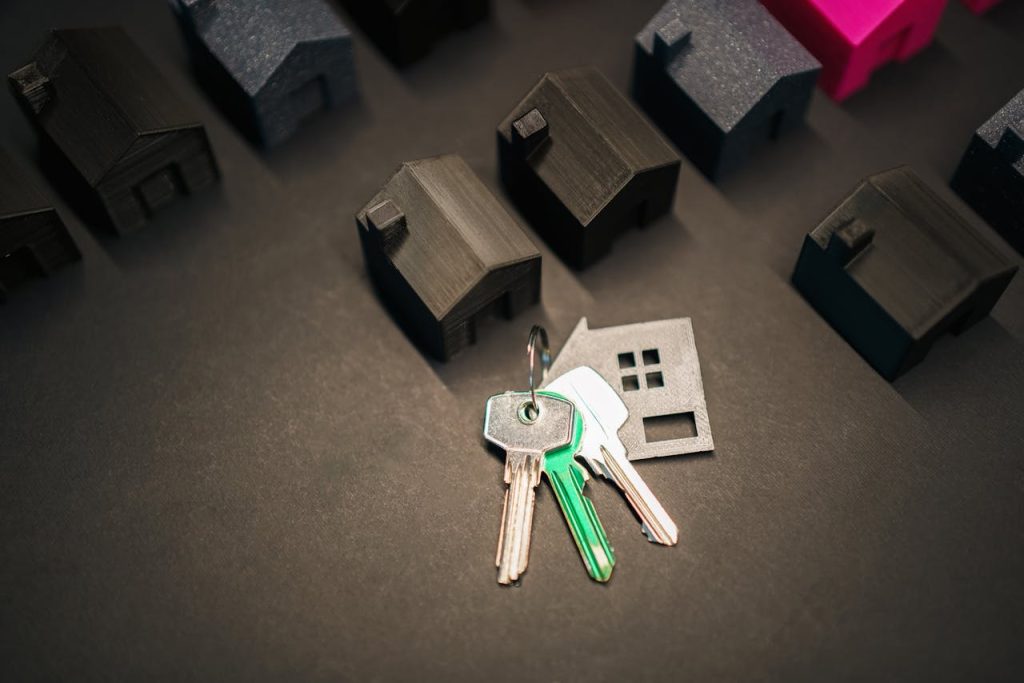But before you grab those moving boxes, let’s break down the perks and pitfalls of this choice. After all, no one wants to dive headfirst into a change without weighing the options.
Benefits of Downsizing Your Home
Moving to a smaller space can have many benefits. It's not just about saving money, though that's a big reason! Let’s take a closer look at the perks of minimalizing and how it could work for you:
- • Financial Savings: It often means saying goodbye to big mortgages, high taxes, and costly upkeep. It’s a chance to free up funds for other priorities. These include retirement adventures, long-overdue vacations, or a bigger financial cushion.
- • Equity Release Through Downsizing: If you have significant equity in your home, a smaller, cheaper one could unlock those funds. Think of it as turning bricks and mortar into something you can use to achieve life goals.
- • Smaller House Benefits: Smaller spaces mean simpler living. Fewer rooms to clean, less clutter. Plus, I could move closer to better amenities or a higher quality of life. Who doesn’t love the idea of ditching yard work for good?
- • Accessible Housing Options: Reducing lets you choose a home that better fits your needs. A single-story layout for easier mobility or a location closer to family and friends can help. The move can align your living situation with your lifestyle.
Each of these benefits could be the nudge you need to make a move toward a simpler, more manageable life. Just don’t forget to weigh the emotional and logistical considerations, too!
Challenges of Downsizing
While it has its perks, it's not all sunshine and roses. There are some hurdles you might face along the way—let’s break them down:
- • Emotional Attachment to Current Home and Possessions: Let’s be honest—moving out of a place where you’ve built memories can tug at the heartstrings. Sorting through decades of belongings may feel like saying goodbye to your past. It’s no surprise that many people find this part of the process the toughest.
- • Adjustment to a Smaller Space and Potential Loss of Privacy: A cozy home can feel snug—or cramped, depending on your perspective. It might mean giving up a spare bedroom. It might mean swapping a big backyard for a small patio. It can take time to adapt to a smaller space, especially if you're used to having room to stretch out.
- • Moving Costs for Downsizing, Including Logistics and Setup in a New Home: Moving isn't just about packing boxes. There’s the cost of movers, transportation, and even setting up utilities in the new place. These expenses can add up quickly, making it important to budget wisely.
- • Potential Hidden Costs of Downsizing, Such as Renovations to Sell or Buy: Whether it’s fixing up your current place to attract buyers or updating your new one to feel like home, hidden costs can sneak up on you. Prepare for the unexpected, from fresh paint to pesky inspection fixes.
Downsizing has its challenges. But, with some planning and a good mindset, you can navigate the process. You'll end up with a home that fits your needs.
When to Downsize Your Home
Knowing when to move to a smaller place can be tricky. But some signs may show it's time to downsize.
Signs It Might Be Time to Downsize:
- • Empty Nest Syndrome: When the kids have flown the coop, that five-bedroom house can start feeling a little... echoey. If you're heating and cleaning rooms that no one uses, it might be time to rethink your space.
- • Financial Strain: Keeping up with a hefty mortgage or high utility bills can drain your wallet—and your energy. It could free up cash for things like travel, retirement, or even spoiling the grandkids.
- • Mobility Issues: Let’s face it: navigating stairs and sprawling layouts isn’t as fun as it used to be. A smaller, single-story home could be a game-changer for comfort and safety.
Planning Considerations for Timing the Transition Effectively
Timing is everything. Begin by reflecting on a few key questions:
- • Market Trends: Are current conditions favorable for selling? In a seller-friendly market, you might achieve a higher profit.
- • Personal Readiness: Are you emotionally and practically prepared for the move? Decluttering, packing, and saying goodbye to a long-time home take time and energy.
- • Future Needs: Think long-term. Will this new place fit your needs in the years ahead, or are you just looking for a short-term fix?
Downsizing is a big decision. But knowing when to act can make the transition smoother and more rewarding. Plus, a fresh start in a cozier space might just be the breath of fresh air you need!
Practical Steps to Prepare for Downsizing
It isn’t just about moving boxes; it’s about moving forward. A bit of prep work can make the process smoother and a lot less overwhelming. Here's a step-by-step guide to address it:
Decluttering for Downsizing
Before you pack a single box, it’s time to face the stuff. Over the years, things have piled up—some useful, some sentimental, and some you forgot you even had.
- • Sort Strategically: Create three piles: keep, donate, and toss. Be honest with yourself—do you need that bread maker from 1995?
- • Sell Items: Turn your clutter into cash by hosting a yard sale or selling items online.
- • Donate: Local charities, shelters, and thrift stores can give your unused items a new life.
- • Dispose Responsibly: Recycle or safely discard items that can't be reused. This includes old electronics and damaged furniture.
Developing a Downsizing Checklist
Having a plan keeps the chaos at bay. Break the process into manageable chunks:
- • Budget Planning: Factor in the costs of the move, potential renovations, and any new purchases for your future home.
- • Research New Locations: Find places that fit your lifestyle. They could be closer to family, in a warmer climate, or near a busy downtown.
- • Hire Movers or Enlist Help: Whether you go pro or rope in a few strong friends, plan your moving day logistics in advance.
Understanding the Costs of Downsizing
Moving comes with its price tag, and budgeting requires careful consideration.
- • Realtor Fees: These can add up, but they’re negotiable. Or, skip them entirely by using alternative selling options (more on that in a second).
- • Home Inspections: Essential for avoiding surprises, whether you’re selling or buying.
- • Closing Costs: Be ready for fees tied to transferring property, title work, and legal documents.
How to Save Realtor Fees – The Benefits of Selling Your Home to Cash Home Buyers
If saving time and money is a priority, selling to a cash home buyer could be the perfect solution.
- • Why Consider Cash Buyers? Companies like Doctor Homes simplify selling by skipping showings, repairs, and long negotiations.
- • What You Save: Forget hefty commission fees and months of waiting. Cash buyers handle logistics, giving you a quick and stress-free way to move on.
Trimming down doesn’t have to feel overwhelming. Selling your house can be an easy process when you have a clear plan, the right tools, and a fresh mindset. Embrace this opportunity as a chance to simplify your life and start an exciting new chapter with confidence.
Downsizing Decisions: Wrapping It All Up
Simplifying comes with its fair share of ups and downs (pun intended), but it’s a journey worth taking. When you choose to get a fair cash offer for your house, you can free up resources, simplify your life, and move toward a place better suited to your needs. While it requires emotional resilience, careful planning, and a clear understanding of the costs, the rewards can be truly life-changing.
As you consider the Pros and Cons of Downsizing Your Home, take time to carefully evaluate how the move aligns with your financial goals, lifestyle needs, and future plans. Downsizing isn't just about living in a smaller space—it's about making a smarter, more intentional choice for your next chapter. Don’t hesitate to consult professionals who can guide you through the process. Trusted companies like Doctor Homes can offer practical support and fair solutions to make your transition smooth and stress-free. Remember, downsizing doesn’t mean giving up—it can be the beginning of something better.
FAQs about Top Pros and Cons of Downsizing Your Home
What are the main financial benefits of downsizing?
It often reduces monthly expenses, such as mortgage payments, utilities, and maintenance costs. Additionally, selling a larger house can unlock equity for savings or other priorities.
How can I emotionally prepare for downsizing?
Start by focusing on the positives, like financial freedom and simplified living. Take your time decluttering. Take your time letting go of items with sentimental value.
What are the hidden costs of downsizing?
Hidden costs can include realtor fees, moving costs, and home repairs. Factor in these extra expenses when creating your plan.
Is downsizing always the right choice?
Not necessarily. It depends on your financial situation, emotional readiness, and long-term goals. Consider all factors carefully before deciding.
What steps can help make shifting to a more compact home easier?
A detailed plan is your best friend. Declutter, hire trusted professionals and consider selling to cash buyers like Doctor Homes. It will save you time and stress.




